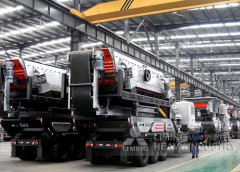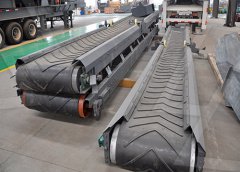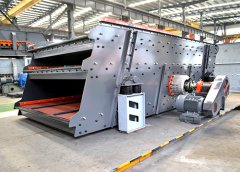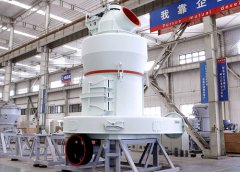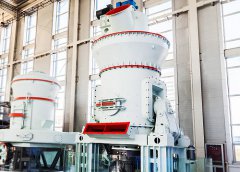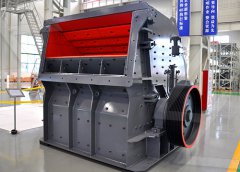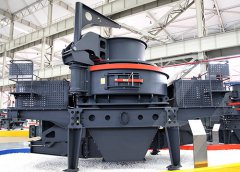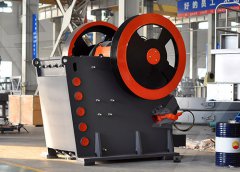
Electrolysis
In chemistry and manufacturing, electrolysis is a technique that uses direct electric current (DC) to drive an otherwise non-spontaneous chemical reaction. Electrolysis is commercially important as a stage in the separation of elements from naturally occurring sources such as ores using an electrolytic cell. The voltage that is needed for electrolysis to occur is called the decomposition potThe extraction of metals depends on the difference in chemical potentials which makes the separation of metal values from the compounds difficult. A Molten Salt Electrowinning of Metals and Materials: Opportunities
احصل على السعر
A NEW METHOD FOR THE ELECTROLYTIC SEPARATION OF METALS
Article Views are the COUNTER-compliant sum of full text article downloads since November 2008 (both PDF and HTML) across all institutions and individuals.Electrolytic separation of cobalt and tungsten from cemented carbide scrap and the electrochemical behavior of metal ions ScienceDirect Abstract Electrolytic separation of cobalt and tungsten from cemented
احصل على السعر
Metals Free Full-Text Progress on Electrodeposition
The electrodeposition process of metals and their alloys is widely used in the automotive, space, electronics, computing, jewelry, and other consumer items industries. Over the years, the search for new Article Views are the COUNTER-compliant sum of full text article downloads since November 2008 (both PDF and HTML) across all institutions and individuals.THE ELECTROLYTIC SEPARATION OF THE METALS OF THE
احصل على السعر
Separation of lithium, nickel, manganese, and cobalt from waste
Electrodialysis is an emerging green process to recover valuable metals from postconsumer lithium-ion batteries. This study focuses on the separation and This article discusses emerging recycling methods for value-added compounds beyond metals, including organic compounds, which may point to new Electrochemical Separations for Metal Recycling IOPscience
احصل على السعر
Electrolytic extraction of yttrium using recycle liquid gallium
The main purpose of this paper is to study the extraction and separation of key fragment elements based on the electrolytic refining process of spent fuel dry reprocessing. Firstly, the electrochemical mechanisms of Er(III) and Yb(III) in LiCl-KCl molten salts were investigated on W and In film electrodes with applied cyclic The key to IAP for the separation is thus a difference in metal ion solubilities, Lang, J. et al. High-purity electrolytic lithium obtained from low-purity sources using solid electrolyte.In-situ anodic precipitation process for highly efficient separation
احصل على السعر
Separation of lithium, nickel, manganese, and cobalt from
During metal separation, Ni and Co were separated using electrodialysis coupled with EDTA and then Li was separated from Mn using electrodialysis with a monovalent CEM. Furthermore, the separation of different metals through the ion-exchange membranes was studied using electrochemical impedance spectroscopy (EIS) The separation and recovery of tungsten and cobalt from cemented tungsten carbide (WC-Co) scraps can be carried out by adding WO 3 and CoO into the Na 2 WO 4 molten salt to simulate the calcination of WC-Co scraps. The Raman spectra and the XRD patterns of the molten salts cooled naturally to room temperature, and the Electrolytic separation of cobalt and tungsten from cemented
احصل على السعر
Recovery and separation of rare earth elements by molten salt
With the increasing demand of rare earth metals in functional materials, recovery of rare earth elements (REEs) from secondary resources has become important for the green economy transition. Molten salt electrolysis has the advantages of low water consumption and low hazardous waste during REE recovery. This review systematically The flakes removed from the cathode of the electrolytic cell are then heated to 500 °C, which produces electrolytic manganese powder. 27 Electrolytic manganese was added to the NDS in 2019. 14 Although recycling manganese outside of metal alloy scrap is not common, it has been recovered from batteries using thermal treatments and chemical Electrochemical methods for materials recycling RSC Publishing
احصل على السعر
Electrochemical Separation of High-Purity Sb from Pb Springer
For the decontamination of Pb in a contaminated Sb alloy, the separation behaviors of Sb and Pb are investigated in choline chloride-ethylene glycol deep eutectic solvent (ChCl-EG DES) at 323–363 K. Linear sweep voltammetry measurements are recorded for determining the electrochemical behaviors of Sb and Pb in a 0.1-M Direct electrolytic separation of tungsten and cobalt from waste cemented carbide and electrochemical behavior of tungsten and cobalt ions in NaF–KF molten salts. Author links open overlay panel Ming Li a b, The results show that metal cobalt powder was obtained at ≤0.6Direct electrolytic separation of tungsten and cobalt from waste
احصل على السعر
Separation of Metals f rom a 01 Solution (Cu-Ni) Through 2016
The set-up for the practicum is indicated in Figure 1. Since we have an Electrolytic cell, the anode should have a positive polarity and the cathode should have a negative polarity. The reaction at the anode is oxidation and in the cathode is reduction. Explain the principle of the method of fixed cathode potential based on theThe prospects of the electroflotation method for selective separation of rare-earth metal ions (Ce 4+ and La 3+) from aqueous solutions in a flow-type plant are described. The separation process proceeds most effectively in sodium sulfate and sodium nitrate solutions at pH value of 5.0. The separation factor of metals is higher than 18.Selective separation of rare-earth metal ions from aqueous
احصل على السعر
US1414423A Electrolytic separation of metals Google Patents
Electrolytic separation of metals Country Status (1) Country Link; US (1) US1414423A (en) Cited By (7) * Cited by examiner, † Cited by third party; Publication number Priority date Publication date Assignee Title; US2529237A (en) * Electronic waste (e-waste) management and recycling are gaining significant attention due to the presence of precious, critical, or strategic metals combined with the associated environmental burden of Electrochemical Approaches for the Recovery of
احصل على السعر
Separation of iron(iii), zinc(ii) and lead(ii) from a choline chloride
desired metal resulting in a puri ed and concentrated aqueous metal phase. Then the recovery of the metal in its elemental state is usually achieved by electrowinning or precipitation.10,11 The separation and recovery of Fe(III), Pb(II) and Zn(II) from aqueous solutions, that mimic jarosite waste streams, has been broadly studied using SX.Electroflotation, a rather unconventional flotation technique used in effluent treatment, has been examined for the recovery and separation of magnesium carbonate fines [35]; in this category belong magnesite MgCO 3 and dolomite CaMg(CO 3) 2.It was found that that carboxymethyl-cellulose and sodium hexametaphosphate as modifiers Electroflotation process: A review ScienceDirect
احصل على السعر
Recent advances in selective separation technologies of rare
However, if the metal needs to be liquid in this process, the electrolyte is required to have a higher melting point than the metal, and the choice of electrolytic cell and electrolyte is limited. Before large-scale use in industrial production, it is extremely important to select suitable electrolytic cell materials and process research and A process for the separation of metals, the metals being, comprised as the metal oxides in a mixed oxide sample, comprises (i), adding the mixed oxide to a molten salt electrolyte and cathodically electrolysing the oxide, the potential of the cathode being controlled so as to favour oxygen ionisation over deposition of metal from the cations present in the molten GB2395958A Electrolytic separation of metals Google Patents
احصل على السعر
Electrodeposition of Metals an overview ScienceDirect Topics
Growth kinetic studies. To study the growth kinetics during the electro-deposition of metals an experimental setup ( Fig. 13.22) was employed by Rastogi et al. [ 52 ]. It consisted of two identical parallel electrodes at a distance of 5 cm and covered with a thin layer of aqueous electrolyte containing the metal ion.Huge amounts of manganese-rich solid residues are yearly produced worldwide by industrial electrolysis, calling for advanced methods of recycling in the context of the circular economy. Here, we review manganese recycling with focus on ore reserves, electrolytic production, residue stockpiling and environmental impact, reducing the Recyling manganese-rich electrolytic residues: a review
احصل على السعر
US3886055A Electrolytic separation of metals Google Patents
A process for separating silver, gold or a silver/gold alloy from a composite metal body in which the silver, gold or alloy is adhered as an external layer over a ferritic or austenitic stainless steel substrate. Separation is effected by controlled potential electrolysis in which the metal composite serves as the anode and in which the electrolytic solution used electrolytic separation of the metals, the metallic fraction obtained. after shredding the WEEE was leached with ferric sulfate according. to the procedure described in of Y azici and Deveci. 9(PDF) Extraction and separation of non-ferrous and precious metals
احصل على السعر
